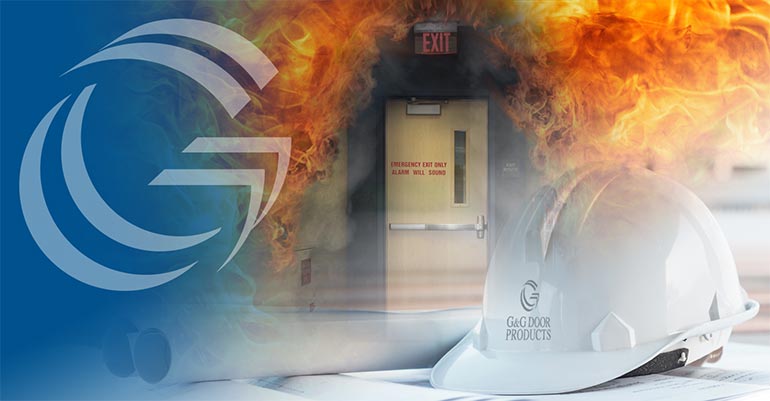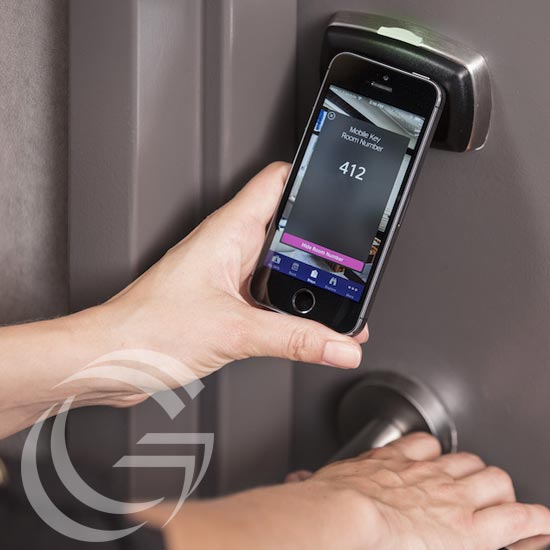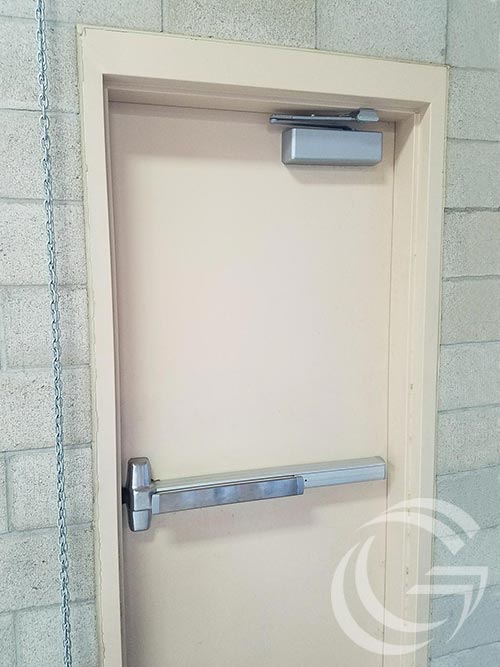Over the years, the tech industry has brought fantastic products to the door market from biometric readers to antimicrobial coatings and even smart locks that are connected to Wifi. Fresh products like this are set to become a vital part of our business sector. New tech like this will ensure that the end users can manage the levels of health and safety for occupants. G&G Door Products has an important goal that we always strive for. We aim to continue to stay on top of new tech ideas, staying ahead of the curve so we can provide the brightest concepts and innovative products to the customers we serve.
What is the impact of codes and standards on buildings?
A number of key organizations work to make sure that any building constructed today meets a minimum quality and standard level. These organizations create documents like building, fire and life safety codes to ensure that any building whether residential, industrial, commercial or recreational is safe for occupants. Take a look at our door manufacturing.
Included in these documents are strict conditions for any materials or products that are used during construction of new and certain building remodels. This includes suitable protection from smoke, gases or fire and protection from intruders or violent criminals. It is important to be aware that these documents are not legally enforced until they are accepted by a jurisdiction. Typically, this will only occur after certain conditions have been added based on the region where they are being adopted.
The purpose of fire door assemblies
Fire doors are designed to give a safe escape from a burning building, amongst other things. They help to protect the structural integrity of a building and the people inside, reducing damage and saving lives in the process. They can give some emergency breathing space while waiting for help to arrive. Keeping these doors up to code is imperative to the safety of the building and the lives of the people inside. New doors in various sizes and designs can be purchased, but it can sometimes be easier to update existing doors rather than outright replacing them.
In a fire, these doors are subjected to conditions that require them to be able to take extreme stress and force while maintaining the structural integrity of the door opening. Contrary to popular belief, these doors don’t simply get away with a few scorches on the surface. In just a few minutes, the doors expand on the fire side and they begin to bend towards the heat.
The doors twist and deform, and if the fire is located on the pull side of the door, even more stress is exerted on the hinges and other components of the fire door. They must be specially designed and maintained to stay exactly where they were in the original framing.
The fluid that is located in the hydraulic door closer will reach boiling point eventually, and this is when it will begin to leak. Once a leak has taken place, the closer has completed its purpose because the door leaf is closed. The closer tends to fall away from the doors without the assembly failing.
Lots of things can happen to fire doors when the temperature reaches a certain point. Door knobs, levers and fire exit hardware devices will also fall away from the door, and they cannot be used. However, in the testing process it is ensured they won’t release the latching hardware so that the door remains closed. Every element is designed so that the doors can handle a huge amount of stress during a fire, and the way they look after a fire has been extinguished is confirmation to the doors integrity.
No matter what else happens to the assembly, the latching hardware and hinges absolutely must keep the door leaf closed and latched in place. Careful maintenance can be one of the only ways to ensure that this happens if a fire does break out. The doors won’t look anything like they did in the aftermath of a fire. They will be totally warped and destroyed by the fire, and everything will be consumed. Expect a warped, distorted shell in the place where doors used to inhabit. This is proof that the doors are precisely built to withstand a fire and save lives.
Neglect to maintain fire doors and make repairs with updates when necessary can cost human life, or at the very least, serious injuries to the people that work in the building.
How codes and standards can affect buildings
Adhering to fire, life-safety, and accessibility codes is imperative for you, your building, and the occupants inside of the building. The documents are written to ensure these buildings are properly constructed and properly maintained. These codes govern, and protect residential, commercial, industrial, institutional, and recreational buildings and facilities.
Codes ensure that buildings are maintained to the minimum level
Requirements include:
- An accessible means of egress
- Protection from fire, smoke, and gases
- Security from intrusion and violent crimes
There are five major model building codes in the US, which are in effect in regions throughout the entire country. They are:
- The International Building Code (IBC) published by the International Code Council (ICC); NFPA 5000
- Building Construction and Safety Code (BCSC), published by the National Fire Protection Association (NFPA)
- The National Building Code published by Building Officials and Code Administrators (BOCA)
- The Standard Building Code, published by Southern Building Code Congress International (SBCCI)
- The Uniform Building Code (UBC), published by the International Conference of Building Officials (ICBO)
These codes are designed to govern new construction, and there are two more codes that are used to ensure that occupied structures are satisfactorily maintained:
- The International Fire Code (IFC) published by ICC
- NFPA 1 The Uniform Fire Code TM (UFC) and published by NFPA.
A supplementary code, which has limited application as a building and fire code, is NFPA 101 the Life Safety Code TM (LSC). Substantial portions of the language used are referenced by, or excerpted into, the model codes.
Standards are different because they are written to ensure that there is a basic level of quality and guarantee that products meet building requirements. An example of this would be in the case of fire door assemblies. Unlike codes, standards cannot be legally enforced. Unless of course, they have been included in the building fire or life safety code. In the case of fire door assemblies, the NFPA 80 is commonly seen as the actual standard for fire door assemblies due to the fact it is referenced in all model codes mentioned.
Owners, AHJs, and property managers need to understand the issues associated with lengthening the inspection cycle. Indeed, the repercussions can be fatal and must be compared to the time and effort it takes annually to ensure fire doors are working effectively.
It is the responsibility of the building owner to guarantee that building occupants are safe as stated by the NFPA 80. According to this document, fire doors and openings must be tested and inspected at least once a year. It is crucial that these inspections are completely by qualified and trained individuals.
At G&G Door Products, we can handle fire door safety inspections by completing the analysis while providing documentation for your facility. By doing this, you can save time, reduce your level of liability, save money, and keep compliance with the NFPA.
G&G Door Product Services
If you’re looking for a specific solution for your architectural doors, don’t hesitate to contact us today. We can help you find exactly what you’re looking for and provide the information that you need to stay safe.
With all these possibilities you’ll be able to find the perfect solution for your doors, frames, and hardware. Work with our expert team and find the ultimate options for your needs. Give us a call today to bring our experience and service for your building facility safety concerns.



